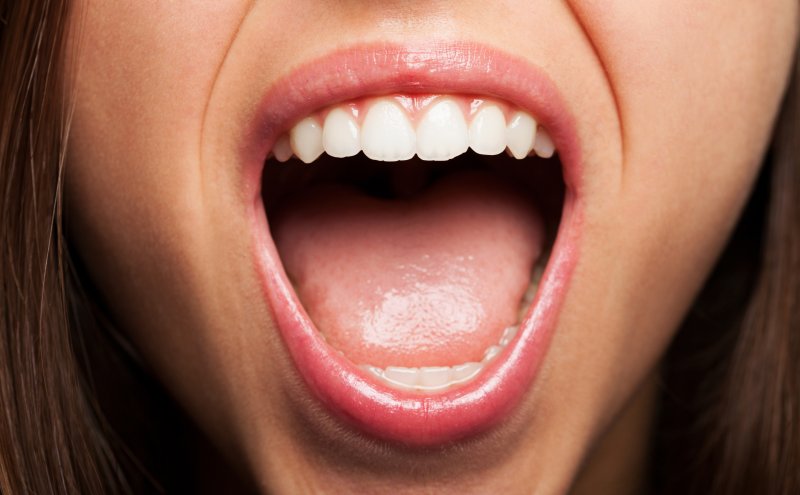What Are the Parts of Your Mouth and What Do They Do?
August 5, 2021

Have you ever wondered how your mouth works? It’s made up of numerous components that work together to help you eat, speak, breathe, digest food, and smile. Plus, it does a bit more beyond that! By understanding how these parts work, it’s easier to recognize the significance of good oral care. Read along as we discuss the different parts of the mouth and their functions.
Parts of The Mouth and Their Functions
Here is the basic anatomy of your mouth and how each part functions:
Lips and Cheeks
This duo is made up of strong muscles that allow you to do many things, such as smile, frown, and kiss. Your lips help you breathe by letting air into your mouth, and when working together with the cheeks, they let you speak. They also keep saliva and food in your mouth while chewing. Plus, they act as a guide to keep your teeth in their proper positions!
Tongue
Did you know that your tongue is one of the hardest working muscles in your body? Like your heart, this powerful muscle is always working by helping you chew, swallow, speak, and taste food. It’s home to about 10,000 taste buds, allowing you to enjoy your meals by detecting sweet, salty, bitter, and savory flavors.
Teeth, Gums, and Alveolar Bone
Your teeth are made of hard enamel and have roots that anchor them into the jawbone. The alveolar bone stabilizes the teeth while your gums hold them in place and protect the roots from decay. The obvious function of your pearly whites is to tear and chew food for proper digestion. However, they also give your face its shape and help you pronounce words and sounds.
Salivary Glands
Your salivary glands are responsible for producing saliva, a substance that breaks down food to begin the digestive process. It also moistens your mouth so you can speak, chew, and swallow. Since it serves as a natural cleansing agent that repeatedly washes away bacteria from your teeth and gums, it protects your mouth against cavities, tooth decay, and gum disease.
Temporomandibular Joint
The temporomandibular joints (TMJ) grant you the ability to open and close your mouth and move your lower jaw forward and side to side. The two joints are located on both sides of your head and work with your jawbone, facial muscles, and ligaments. They also assist you in speaking, chewing, and swallowing.
How Can I Keep My Oral Cavity Healthy?
There are many steps you can take to keep your oral cavity healthy, including:
- Practicing good oral hygiene (brushing your teeth twice a day and flossing daily)
- Regularly cleaning your tongue
- Rinsing with an antimicrobial mouthwash
- Avoiding tobacco products and excess alcohol consumption
- Limiting your intake of sugary, fatty, acidic, starchy, and processed foods
- Visiting your dentist for routine cleanings and exams
As you can see, there’s so much more to your mouth than just a gorgeous smile! By taking good care of your oral cavity, you can keep it healthy and strong for many years to come.
About the Author
Dr. Carroll R. Butler has helped patients achieve and maintain their best smiles for over 25 years. He earned his Doctor of Dental Surgery at the University of Texas Health Science Center Dental School at San Antonio. Dr. Butler is passionate about educating his patients to help them make informed and confident decisions about their oral health. If you have any questions about parts of the mouth, he is more than happy to answer them for you. Visit our website or call (830) 257-4900 to schedule an appointment with Dr. Butler.
No Comments
No comments yet.
RSS feed for comments on this post.
Sorry, the comment form is closed at this time.

